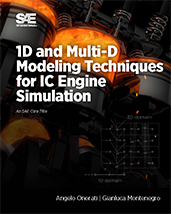Technical Paper
Turbocharging system selection for a hydrogen-fuelled spark-ignition internal combustion engine for heavy-duty applications
2024-07-02
2024-01-3019
Nowadays, green hydrogen can play a crucial role in a successful clean energy transition, thus reaching net zero emissions in the transport sector. Moreover, hydrogen exploitation in internal combustion engines is favoured by its suitable combustion properties and quasi-zero harmful emissions. High flame speeds enable a lean combustion approach, which provides high efficiency and reduces NOx emissions. However, high air flow rates are required to achieve the load levels typical of heavy-duty applications. In this framework, the present study aims to investigate the required boosting system of a 6-cylinder, 13-liter heavy-duty spark ignition engine through 1D numerical simulation. A comparison among various architectures of the turbocharging system and the size of each component is presented, thus highlighting limitations and potentialities of each architecture and providing important insights for the selection of the best turbocharging system.

